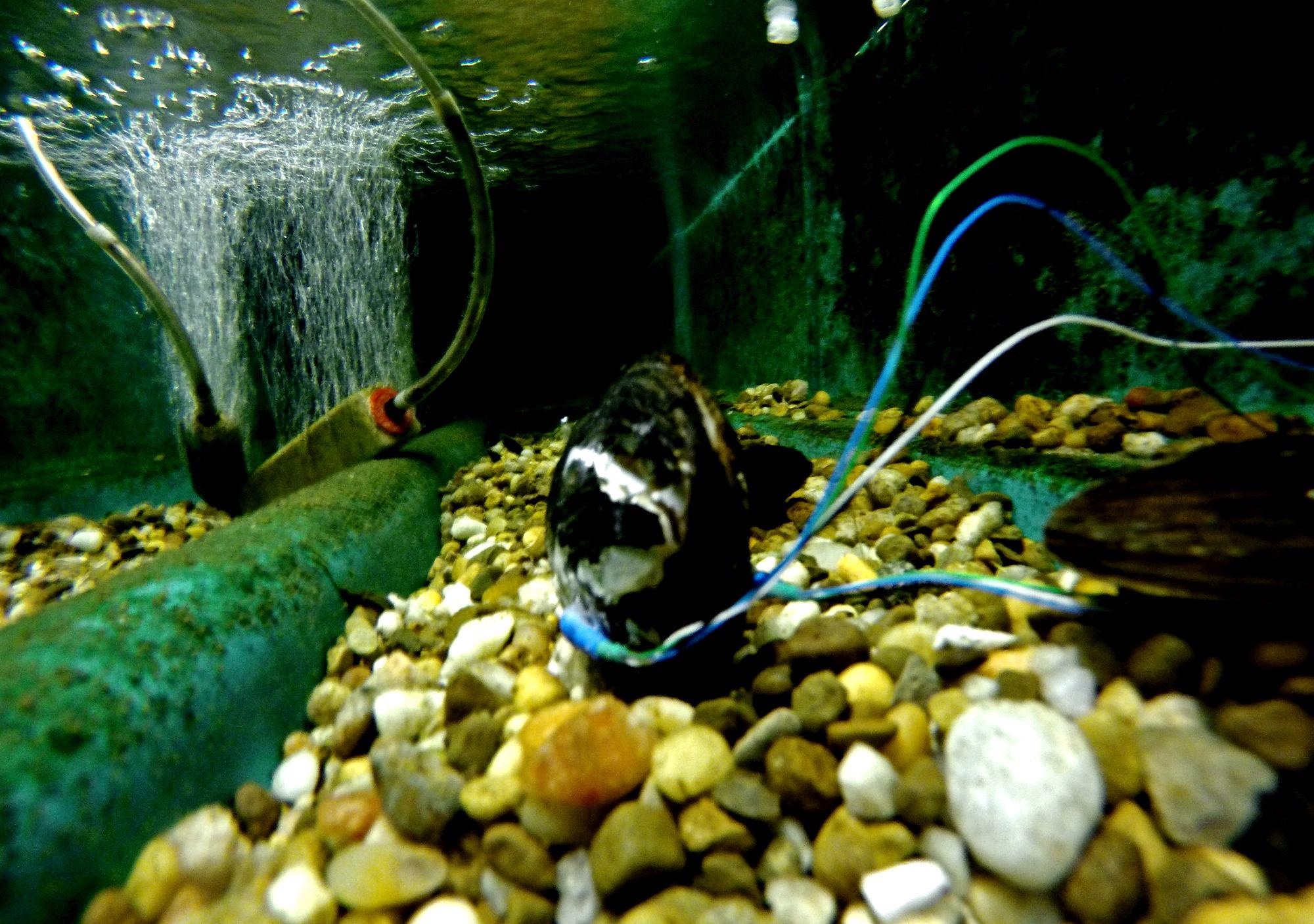AZoCleantech speaks with Dr. Alper Bozkurt and Dr. Jay Levine from North Carolina State University. The pair teamed up to develop a system that monitors the movement of mussels. The opening and closing of bivalve mollusks can indicate toxins in aquatic environments.
Can you give our readers a summary of your recent research?
We demonstrated that attaching an array of accelerometers (the step counting sensor in Fitbits and other wearables) to the shells of freshwater mussels provides us with enough resolution to measure their shell opening and gaping behavior. We connect these sensors to wireless networks to monitor a group of mussels simultaneously.
What can the opening and closing of bivalve mollusks indicate about toxins in aquatic environments?
Freshwater mussels are among the most imperiled fauna on the planet. The majority of the 290+ species in North America are threatened, endangered, or of special concern to state and federal wildlife agencies. Freshwater mussels live in streams and lakes and remove detritus, algae and bacteria from the water when they feed.
They open and close their shells throughout each day, but if something harmful enters the water they will generally all close their shells and stop feeding. Monitoring their shell movement can serve as an early warning signal that something potentially hazardous has been released into the water.

Image Credit: James Reynolds/ NCSU
What are some of the examples of pollution that the mollusks can detect?
Many factors have been associated with the decline of freshwater mussels, such as erosion and sedimentation, pesticides and compounds leaching from mining operations. Sediments entering the water can disrupt their feeding activity and affect their health, toxins result in mortality. Mussels also accumulate toxins, which can help us recognize the toxin in a stream or lake.
Researchers have previously tried to use bivalves and their response to toxins as a tracer of conditions in aquatic ecosystems. What makes your research successful?
Our current research studies focused on improving the sensor performance where the earlier work performed by others used magnets and magnetic detectors to monitor gaping behavior. We demonstrated that accelerometers provide superior properties over their magnetic counterparts.
Can you give some insight into the production of the system used to monitor the bivalves and their response to the toxins?
The system incorporates a pair of accelerometers attached to each shell of the mussel. Then a thin wire connects this pair of accelerometers to a data acquisition system that aggregates data from similar other pairs of accelerometers attached to other mussels. In this study, we tested our system with four pairs attached to four mussels. Connecting more mussels is possible and straightforward.
The digital data on the aggregator is stored on a Secure Digital (SD) memory card. The next generation of the system includes a wireless transceiver uploading the data to the cloud over a Bluetooth and WiFi connection. We have also developed a LoRa network-connected system and are working on connecting to the GSM/LTE network.
How is the data from the monitoring system gathered by the researchers?
Our initial experiments were in the lab environments and we used an SD card to store the data. The next generation of this system uploads the data to the cloud (to a folder in a file storage service), where the researchers can connect to the internet and download the data. The cloud connection is achieved through LoRa, WiFi or GSM/LTE network.

Image Credit: James Reynolds/ NCSU
How can this system help researchers understand more about mussels as well as the monitoring of ecosystems?
Monitoring the shell movement of freshwater mussels will help us improve our understanding of their feeding activity and the pollutants that impact their health. Mussels often die before we know that a toxin has entered a stream, the monitors will potentially help us detect problems before mortality occurs.
What’s next for the team at NC State?
Our studies focused on controlled laboratory environments and we are currently working on moving our system to real life field environments.
Where can readers find more information?
More information can be found on the following websites:
http://www.aeclab.org/
http://www.ibionics.org/
About Dr. Jay Levine
 Dr. Levine is a Professor in the Department of Marine, Earth and Atmospheric Sciences, in the College of Sciences at NC State University, where he coordinates the Aquatic Epidemiology and Conservation Laboratory. He initially joined NC State in 1984 at the College of Veterinary Medicine’s as one of their epidemiologists, and provided instruction to veterinary students and graduate students. Although his early work focused primarily on arthropod-borne diseases and in particular, Lyme disease, his research efforts have also included studies on food safety, zoonoses, equine and companion animal health and environmental source tracking.
Dr. Levine is a Professor in the Department of Marine, Earth and Atmospheric Sciences, in the College of Sciences at NC State University, where he coordinates the Aquatic Epidemiology and Conservation Laboratory. He initially joined NC State in 1984 at the College of Veterinary Medicine’s as one of their epidemiologists, and provided instruction to veterinary students and graduate students. Although his early work focused primarily on arthropod-borne diseases and in particular, Lyme disease, his research efforts have also included studies on food safety, zoonoses, equine and companion animal health and environmental source tracking.
For the past two decades, his laboratory has been working to understand the basic biology of freshwater invertebrates, which are among the most imperiled fauna on the planet. Studies conducted by his laboratory focus on their diet and nutritional health, their propagation for population augmentation and identifying factors contributing to their global decline. Dr. Levine also serves as a co-director of their Climate Change and Society Graduate program. Dr. Levine is active in supporting early reading, math and science literacy and coordinates the Homework Haven, a free-after school tutoring for k-6 grade children in Raleigh, NC.
About Dr. Alper Bozkurt
 Alper Bozkurt is a Professor and University Faculty with the Department of Electrical and Computer Engineering at North Carolina State University. He received the master’s degree in biomedical engineering from Drexel University, Philadelphia, PA, USA, and the Ph.D. degree from Cornell University, Ithaca, NY, USA.
Alper Bozkurt is a Professor and University Faculty with the Department of Electrical and Computer Engineering at North Carolina State University. He received the master’s degree in biomedical engineering from Drexel University, Philadelphia, PA, USA, and the Ph.D. degree from Cornell University, Ithaca, NY, USA.
He is the Founder and the Director of the Integrated Bionic MicroSystems Laboratory at NC State University. He was a recipient of the Calhoun Fellowship from Drexel University, the Donald Kerr Award from Cornell University, the Chancellor’s Innovation Award, the William F. Lane Outstanding Teacher Award from NC State University, the National Science Foundation CAREER Award, the IBM Faculty Award, and was included in the Popular Science Magazine 2015 Brilliant 10 list.
Disclaimer: The views expressed here are those of the interviewee and do not necessarily represent the views of AZoM.com Limited (T/A) AZoNetwork, the owner and operator of this website. This disclaimer forms part of the Terms and Conditions of use of this website.